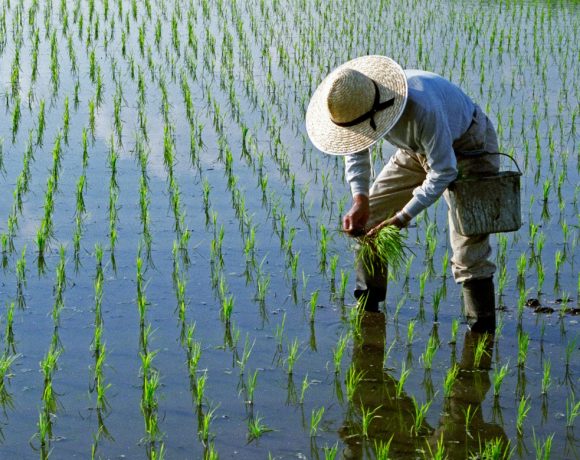- Korean food market is also expanding worldwide, especially after the COVID-19 outbreak with rising attention towards highly nutritious products. Korea does not have a large, competitive market in alternative food, plant-based meat markets. However, one type of meat-free healthy meal from Korea that became popular was temple food.
- Korean Temple food is very rich in nutrients while low in cholesterol despite being strictly vegetarian. With its spirit of “being close to the nature”, Temple food is also known to prevent various adult lifestyle diseases and contribute to healthier diet for Koreans as well as global citizens.
- Experts say that the COVID-19 outbreak and heightened interest in healthy diets would enlarge the opportunities of promoting Korean foods in the world market. In fact, according to Korea Agro-Fisheries & Food Trade Corporation, overseas shipments of Korean food increased by 2% in 2020, from $2.24bn in 2019 to $2.29bn.
Fostering healthy lifestyle through foodtech
This article is the second part of the two-part article series on Korea’s foodtech industry. The first article illustrated the advanced platforms of Korean foodtech, and the second part will cover the healthy outcomes from it.
Food technology in Korea stands out in its use of innovative platforms, connecting restaurants and customers through “Online to Offline” services. However, Korean food market is also expanding worldwide, especially after the COVID-19 outbreak with rising attention towards highly nutritious products. Let’s take a close look at Korean food tech on (1) alternative food market, exemplified by “temple food”, and (2) fermentation technology.
(1) Alternative food – Temple Food and Alternative Meat
Frankly, Korea does not have a large, competitive market in alternative food, plant-based meat markets. The trend for alternative meat is slowly rising, and the increasing demands for such foods and restaurants serving vegetarian meals are a recent phenomenon. However, one type of meat-free healthy meal from Korea that became popular when it was introduced in a Netflix series, Chef’s Table, in 2017 was temple food. Restricting any animal products except dairy, fish and artificial flavors, Korean Temple food focuses on nature-based cooking. It uses mountain herbs and wild greens as flavor enhancers, and beans or tofu to replace meat while providing protein.
The first episode of Chef’s Table Volume 1 features Chunjinam Heritage at Baekyangsa Jangseong County in South Korea, with nun Jeong Kwan as a chef. The episode grabbed the attention of viewers worldwide for expanding the Korean temple stay programs as a successful tourism initiative. Visitors staying at traditional Korean temples get to experience a monk or nun’s daily life and try the temple food. Additionally, one can learn how to cook temple food, which is considered a way to exercise Buddhist teachings, through various platforms, such as cooking classes, online media, etc.
Although it restricts meat, fish and any artificial flavours as well as five pungents – spring onion, garlic, leek, chive and wild chive, Korean temple food is renowned for its creative and eco-friendly nature. For instance, assorted vegetables provide sufficient natural fiber, carbohydrates and protein. Furthermore, Korean temple food is very rich in nutrients while low in cholesterol despite being strictly vegetarian. With its spirit of “being close to the nature”, Temple food is also known to prevent various adult lifestyle diseases and contribute to healthier diet for Koreans as well as global citizens.
With the long lasting history and the current popularity of temple food, Korean startups are developing alternative vegetable-based meat, too. Devotion Food is one of the leading startups that only use natural vegetable-based ingredients for alternative meat. It perfectly imitates the gravy, texture, smell and even Maillard reaction of beef, through its own food technology of creating safe and healthy alternative meat. Another foodtech startup, The PlantEat, creatively uses Korean local black beans. By replacing egg yolk, it processes black bean to produce mayonnaise, cracker, cereal and salad dressing sauce. Not only do they make food more nutritious, The PlantEat uses Korea competitiveness with advanced technology of bean processing, and expands the bean usage from alternative meat to alternative egg products. In addition, it focuses on shortening meat production and decreasing adult diseases among consumers.
(2) Healthier Cooking Methods – Fermentation technology
Probably the most well known Korean food, Kimchi, is a typical example of food made through the process of traditional fermentation. Fermentation is a process of converting carbohydrates to organic acids through microorganisms such as yeasts or bacteria.
Korea has diverse traditional fermented foods because of its geographical characteristics: with four distinct seasons and big temperature differences between summer and winter, fermentation was a way of safely preserving foods for longer periods of time without nutritional loss. There are different types of fermented foods in Korea such as soy sauce, soybean paste, Gochujang, Chongkukjang, Doenjang and Kimchi, consumed not only by Koreans, but by consumers worldwide, and they are expanding their market every year.
Experts say that the COVID-19 outbreak and heightened interest in healthy diets would enlarge the opportunities of promoting Korean foods in the world market. In fact, according to Korea Agro-Fisheries & Food Trade Corporation, overseas shipments of Korean food increased by 2% in 2020, from $2.24bn in 2019 to $2.29bn, and overseas shipment of Kimchi increased by 19% in one year, from $25.4mn in 2019 to $30.2mn in 2020.
Korean food produced through fermentation technology not only adds a rich flavour to its ingredients but also enhances nutrition balances and strengthens immunity of consumers. Studies show that fermented Korean traditional food lowers the level of cholesterol, contains high cancer-inhibiting qualities and guards consumers from many age-related illnesses.
How Korean traditional food technology from Temple food and fermentation technique pioneered in fostering healthy lifestyle in Korea is very distinctive compared to other countries. As described in the first part of this article series, Korea’s foodtech achieved global spotlight with advanced innovation platforms. One could argue that by blending the elements of digital advancements, cutting-edge technologies and an increasing interest in vegetable-based and nutritious diet, Korean foodtech is providing the perfect recipe for wellbeing in the pandemic era.






NO COMMENT